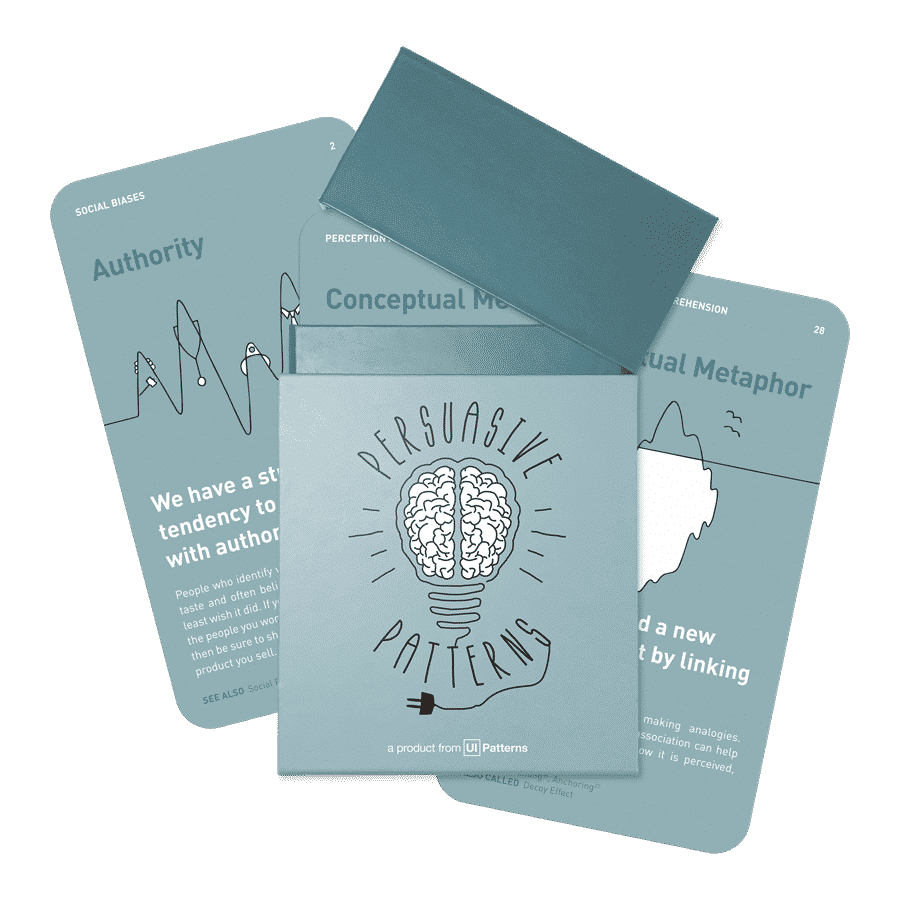Psychological Reactance: When users push back
Persuasive design can backfire and cause unintended consequences, leading to mistrust and negative outcomes.
Boost engagement with the Persuasive Patterns card deck
Leverage behavioral design techniques to create experiences that users love.
Get your deck!Persuasive design can be an effective way to guide user behavior, but it can also backfire if misused. When techniques like Social Proof, Reciprocity, and Default Effect are applied unethically, they can trigger negative user responses such as frustration, mistrust, or abandonment. If users feel manipulated or coerced, persuasive design can harm both the product and its reputation.
Persuasive design leverages cognitive biases to encourage users to make certain choices. However, these techniques can quickly turn manipulative if applied too aggressively. Users may feel forced or tricked, leading to psychological reactance, where they reject both the behavior and the product. Reactance is particularly likely when users perceive a threat to their freedom of choice, such as in the case of guilt-inducing prompts or hidden fees.
Another issue arises when dark patterns, deceptive design tactics—are employed. Examples include pre-checked opt-ins, hard-to-find cancellation options, or hidden costs. These tactics can drive short-term engagement or conversions but often result in long-term damage to trust and brand reputation.
While personalization can enhance user experience, overdoing it can backfire. When recommendations or content feel overly tailored—what’s known as creepy personalization—users may become uncomfortable, leading them to question how much of their personal data is being tracked. If personalization crosses this line, it can make users feel like they’re being watched rather than served, driving them away.
The Intention/Outcome matrix
To prevent persuasive design from backfiring, use the Intention/Outcome Matrix, which helps evaluate whether the outcomes of a design are likely to be beneficial or harmful to users:
| Positive Outcome | Negative Outcome | |
|---|---|---|
| User-Focused Intent | Ethical persuasion that enhances user experience (e.g., simplifying decision-making). | Missteps in execution that frustrate users (e.g., overly complex or unclear interfaces). |
| Business-Focused Intent | Business goals achieved without harming user experience (e.g., ethical nudges). | Business goals achieved at the expense of user trust or autonomy (e.g., dark patterns). |
This matrix helps ensure that your intentions (whether user-focused or business-focused) lead to positive outcomes for both the user and the business.
Assessing risks using the Likelihood/Severity matrix
Another useful tool is the Likelihood/Severity Matrix, which helps assess the risk that a particular persuasive tactic might backfire:
| Low Severity | High Severity | |
|---|---|---|
| Low Likelihood | Minor inconvenience (e.g., annoying pop-ups that are easily dismissed). | Occasional trust issues due to over-personalization or subtle manipulations. |
| High Likelihood | Frequent user frustration (e.g., excessive nudges or overly complex user flows). | Major backlash due to unethical defaults, dark patterns, or hidden fees, causing trust erosion. |
By focusing on high-likelihood, high-severity risks, designers can adjust strategies to minimize negative outcomes and prevent backlash.
Persuasive design can be a powerful tool for influencing user behavior, but when misused, it can backfire, leading to mistrust and disengagement. Using tools like the Intention/Outcome Matrix and Likelihood/Severity Matrix can help ensure that your designs are both effective and ethical. By balancing user needs with business goals and maintaining transparency, you can build products that foster trust, loyalty, and long-term success.
- Mirsch, T., Lehrer, C., & Jung, R. (2017). Digital nudging: Altering user behavior in digital environments. In A. Maedche, A. Botzenhardt, & L. Neer (Eds.), Software for people: Fundamentals, trends, and future applications (pp. 203–213). Springer International Publishing.
